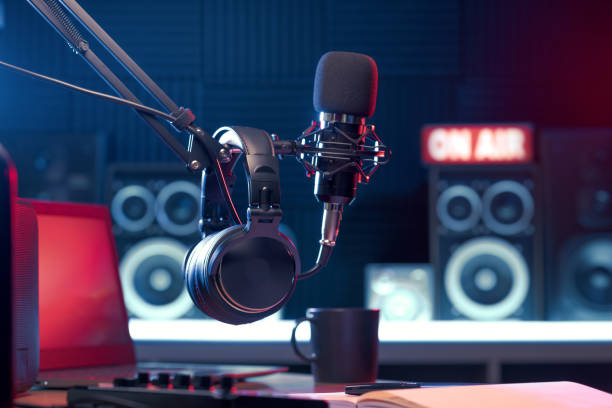Professional Audio Equipment Guide for Every Application
Professional audio equipment transforms how we experience sound across various environments, from intimate home theaters to large-scale concert venues. Understanding the different types of audio systems, their key components, and proper selection criteria helps ensure optimal sound quality for any application. Whether you're setting up a home entertainment system or designing a professional recording studio, the right equipment makes all the difference in achieving exceptional audio performance.

Professional Audio Equipment Guide for Every Application
Navigating the world of professional audio equipment requires understanding various system types, essential components, and selection criteria that match your specific needs. Modern audio technology offers solutions ranging from compact portable systems to sophisticated multi-channel installations, each designed to deliver exceptional sound quality in different environments.
What Types of Audio Systems Are Available Today?
Audio systems span a wide spectrum of applications and complexity levels. Home theater systems typically include surround sound configurations with multiple speakers, subwoofers, and processing units designed for residential entertainment. These systems create immersive experiences through carefully positioned speakers that deliver directional audio matching visual content.
Portable speakers have evolved significantly, offering wireless connectivity and impressive sound quality in compact designs. Professional setups encompass recording studios, live sound reinforcement, and broadcast facilities, featuring high-end components capable of handling complex audio processing and distribution requirements.
Each system type serves distinct purposes, with home installations prioritizing comfort and aesthetics, portable solutions emphasizing convenience and battery life, and professional setups focusing on precision, reliability, and expandability.
Which Key Components Drive Audio System Performance?
Amplifiers serve as the powerhouse of any audio system, converting low-level signals into the electrical power needed to drive speakers effectively. Modern amplifiers range from compact integrated units to separate power and preamplification stages, each offering different power outputs and sonic characteristics.
Receivers combine multiple functions including amplification, signal processing, and input switching in single units. These devices often include built-in streaming capabilities, multiple HDMI inputs, and advanced audio processing algorithms that enhance sound quality across various content types.
Sound processors handle digital signal processing tasks such as equalization, crossover management, and room correction. These components analyze acoustic environments and automatically adjust audio output to compensate for room characteristics, ensuring optimal sound reproduction regardless of installation location.
How Should You Choose Audio Equipment Based on Your Space?
Room size significantly impacts audio equipment selection, as larger spaces require more powerful amplification and strategic speaker placement to achieve even sound distribution. Small rooms benefit from compact systems with controlled dispersion patterns, while large venues need high-output components capable of maintaining clarity at extended distances.
Sound quality needs vary based on intended use, with critical listening applications requiring higher-grade components than casual background music systems. Consider factors such as frequency response, dynamic range, and distortion specifications when evaluating equipment for specific applications.
Acoustic characteristics of your space influence equipment choices, as hard surfaces create reflections while soft furnishings absorb sound energy. Understanding these interactions helps determine appropriate speaker types, placement strategies, and processing requirements for optimal results.
What Maintenance and Calibration Practices Ensure Peak Performance?
Regular maintenance extends equipment lifespan and maintains optimal sound quality over time. Clean connections prevent signal degradation, while proper ventilation ensures amplifiers operate within safe temperature ranges. Dust accumulation on speaker drivers can affect performance, making periodic cleaning essential.
Calibration involves adjusting system parameters to match room acoustics and personal preferences. Modern receivers include automatic calibration systems that measure room response and adjust settings accordingly. Manual fine-tuning allows experienced users to optimize performance beyond automatic settings.
Software updates for digital components ensure compatibility with new audio formats and improve processing algorithms. Regular firmware updates often add features and resolve performance issues, making update management an important maintenance practice.
What Emerging Trends Are Shaping Audio Technology?
Wireless audio technology continues advancing, with high-resolution streaming protocols delivering CD-quality sound without physical connections. Multi-room systems allow synchronized playback across multiple zones, creating seamless audio experiences throughout homes and commercial spaces.
Smart audio technology integrates voice control and artificial intelligence, enabling hands-free operation and intelligent content recommendations. These systems learn user preferences and automatically adjust settings based on listening habits and environmental conditions.
Object-based audio formats create three-dimensional soundscapes that adapt to different speaker configurations automatically. This technology enhances immersion in both entertainment and professional applications, representing a significant advancement in audio reproduction capabilities.
| Equipment Category | Price Range | Key Features |
|---|---|---|
| Home Theater Systems | $500-$5,000 | Surround sound, wireless connectivity, room correction |
| Portable Speakers | $50-$800 | Battery power, Bluetooth, weather resistance |
| Professional Monitors | $300-$3,000 per pair | Accurate frequency response, multiple input options |
| Audio Interfaces | $100-$2,000 | Multiple inputs/outputs, low latency, high resolution |
| Power Amplifiers | $200-$10,000+ | High power output, low distortion, reliable operation |
Prices, rates, or cost estimates mentioned in this article are based on the latest available information but may change over time. Independent research is advised before making financial decisions.
Professional audio equipment selection requires careful consideration of application requirements, room characteristics, and budget constraints. Understanding the relationship between different components and their roles in overall system performance helps ensure successful installations that deliver exceptional sound quality. Whether upgrading existing systems or designing new installations, focusing on quality components matched to specific needs provides the foundation for outstanding audio experiences that satisfy both casual listeners and demanding professionals.




